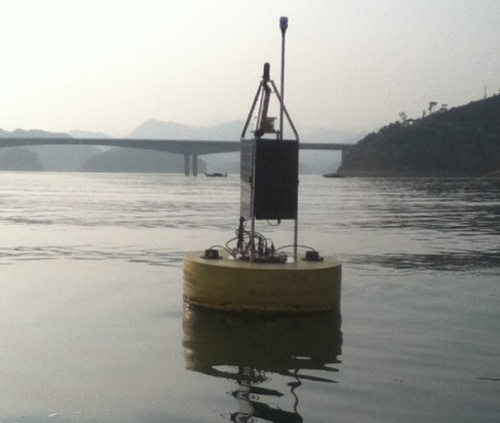Cross-posted from Blog.GLEON.
Recent Bard Center for Environmental Policy (CEP) graduate Alicia Caruso delved deeply into the uses of GLEON data and found that high-frequency buoy data is being shared widely, and a new collaboration with database managers may improve data accessibility to promote greater collaborations with a broader audience of GLEON members and local lake managers. As part of a master’s thesis project, Alicia aimed to answer several questions relating to GLEON and the uses of high-frequency data collected on GLEON buoys worldwide. These include questions on what is currently happening with the data that GLEON is collecting, how it can be used, what benefits and challenges are involved with communicating these data both within the organization and with non-academic users, and how that communication could be improved. Answers to these questions were determined through the use of surveys and interviews.

by Alicia Caruso
Scientists and government organizations are installing automated sensor networks at a rapid rate worldwide. The installation of automated sensor networks is occurring in order to collect data and gain a better understanding of environmental processes. In learning about this trend, I became interested in finding out more about how these data are being used. GLEON is an excellent example of a large-scale network of sensors that are being used to collect and share data.
I collected survey results from twenty-five GLEON primary site contacts, sixteen of who identified their site location. I was also able to conduct interviews at one GLEON site, Lake Taihu in China, where local decision makers receive a report on algal bloom predictions from data collected on a GLEON buoy.

I was pleased to learn that data collected by GLEON buoys are already being used for a variety of purposes. These include academic uses such as:

- classroom instruction,
- student research,
- research for peer-reviewed publications, and
- applying for funding.
Survey respondents also revealed use by non-academic groups:
- recreational,
- non-governmental organizations, and
- industry.
As GLEON members collect data worldwide, one goal of GLEON is to encourage them to share their findings with other GLEON members. Lake managers could also benefit from greater communication with GLEON members in order to gain new insights into lake processes and possible management solutions. For this reason, site contacts were asked about the dissemination of their data.
According to the survey results, most of the buoy data shared by each site is available in the form of:

- raw data,
- data with some degree of QA/QC,
- in publications, and
- on websites.
A little more than half of the survey respondents reported using data from another GLEON site. If site members use data from other sites, they are most likely to ask researchers from that site instead of using existing cyberinfrastructure platforms LakeBase and Vega. New partnerships withCUAHSI and DataONE are addressing how to develop a new and improved platform for sharing data within GLEON and promoting greater collaboration.
While interning at the Nanjing Institute for Geography and Limnology (NIGLAS), Chinese Academy of Sciences, I learned about the algal bloom forecasting report they produce using data from automated buoys on Lake Taihu, one of which is a GLEON buoy.
Lake Taihu is well known for its harmful algal blooms. The bi-weekly report is shared with local decision makers and helps them manage water resource use for the region. When asked about the utility of the report, the decision makers all wanted more detail in the reports, in addition to long-term predictions (the forecast is over three days).
Their responses led me to believe that there needs to be more continuous communication between the scientists and decision makers so that each understands what the other needs and what the limitations are in addressing those needs. Perhaps these lessons can be applied at other GLEON sites.

This work was made possible by a Mary A. Cargill grant from the Bard Center for Environmental Policy. Support was provided from Robyn Smyth (thesis advisor),Guangwei Zhu, and Lisa Borre.

